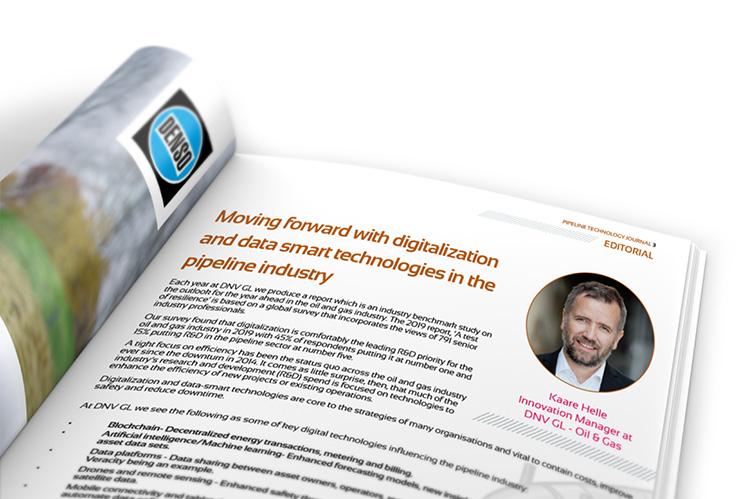Editorial: Moving forward with digitalization and data smart technologies in the pipeline industry

Each year at DNV GL we produce a report which is an industry benchmark study on the outlook for the year ahead in the oil and gas industry. The 2019 report, ‘A test of resilience’ is based on a global survey that incorporates the views of 791 senior industry professionals.
Our survey found that digitalization is comfortably the leading R&D priority for the oil and gas industry in 2019 with 45% of respondents putting it at number one and 15% putting R&D in the pipeline sector at number five.
A tight focus on efficiency has been the status quo across the oil and gas industry ever since the downturn in 2014. It comes as little surprise, then, that much of the industry’s research and development (R&D) spend is focused on technologies to enhance the efficiency of new projects or existing operations.
Digitalization and data-smart technologies are core to the strategies of many organisations and vital to contain costs, improve safety and reduce downtime.
At DNV GL we see the following as some of key digital technologies influencing the pipeline industry:
- Blockchain- Decentralized energy transactions, metering and billing.
- Artificial intelligence/Machine learning- Enhanced forecasting models, new insights into large operational asset data sets.
- Data platforms - Data sharing between asset owners, operators, regulators and investors, DNV GL’s platform Veracity being an example.
- Drones and remote sensing - Enhanced safety through use of drones for pipeline inspections, monitoring using satellite data.
- Mobile connectivity and tablet devices - Mobile and tablet devices to standardize field-based workflow and automate data collection.
- Big data and data management - Benchmarking of asset performance, application of machine learning across large numbers of diverse assets.
- Application programming interface (API) and software as a service (SAAS) - Engineering and analytic models provided and shared between stakeholders enabling enhanced cooperation between stakeholders.
- Digital twins - Pipeline digital twins for remaining life calculations, failure and reliability forecasts.
So, looking into the future we believe new pipelines, including cross-border and national transmission systems, LNG export and receiving terminals, LNG bunkering and LNG carriers of varying scale will all be required as the industry connects new sources of supply with changing demand centres. Decarbonization, digitalization and the now ingrained need for cost-efficiency, will help create the reshaped pipeline sector of the future.
This issue of ptj will highlight some of the key digital transformations we are seeing in the pipeline industry including pipeline performance, maintenance and integrity management.

Yours,
Kaare Helle
Innovation Manager
DNV GL - Oil & Gas
